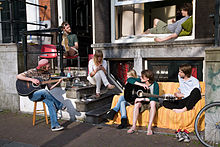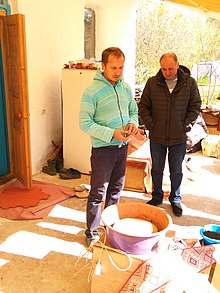
Back مجتمع متعمد Arabic Kommuna (icma) Azerbaijani Камуна Byelorussian Камуна BE-X-OLD Комуна Bulgarian Komuna BS Comuna (societat) Catalan Wohnprojekt German Συνειδητή κοινότητα Greek Intenca komunumo Esperanto
| Part of a series on |
| Living spaces |
|---|
 |
| Part of a series on |
| Utopias |
|---|
 |
| Mythical and religious |
| Literature |
| Theory |
| Concepts |
| Practice |
|
An intentional community is a voluntary residential community which is designed to have a high degree of social cohesion and teamwork.[1][2][3] The members of an intentional community typically hold a common social, political, religious, or spiritual vision, and typically share responsibilities and property. This way of life is sometimes characterized as an "alternative lifestyle".[4] Intentional communities can be seen as social experiments or communal experiments.[1][5] The multitude of intentional communities includes collective households, cohousing communities, coliving, ecovillages, monasteries, survivalist retreats, kibbutzim, Hutterites, ashrams, and housing cooperatives.




- ^ a b Shenker, Barry (1986). Intentional Communities (Routledge Revivals) : Ideology and Alienation in Communal Societies. Routledge. doi:10.4324/9780203832639. ISBN 978-0-203-83263-9. Retrieved 20 September 2021.
- ^ Pitzer, D. E. (1989). "Developmental communalism: An alternative approach to communal studies". Utopian Thought and Communal Experience: 68–76.
- ^ Metcalf, William James (2004). The Findhorn book of community living. Forres, Scotland: Findhorn Press. ISBN 9781844090327.
- ^ Butcher, A. A. (2002). Communal Economics (PDF). Retrieved 20 September 2021.
- ^ Rubin, Zach (31 August 2020). ""A Not-so-silent Form of Activism": Intentional Community as Collective Action Reservoir". Humanity & Society. 45 (4): 509–532. doi:10.1177/0160597620951945. ISSN 0160-5976. S2CID 225187879. Retrieved 20 September 2021.
© MMXXIII Rich X Search. We shall prevail. All rights reserved. Rich X Search